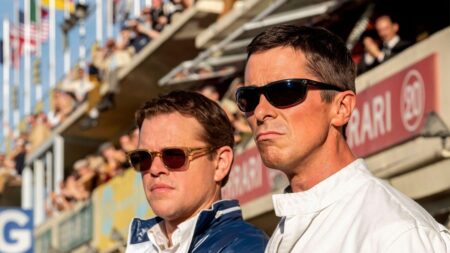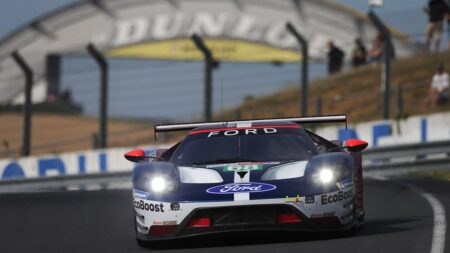
McLaren wants to win 2027 Triple Crown with Le Mans Hypercar
McLaren will enter the Le Mans Hypercar class for the very first time in 2027 – and is gunning to win motor sport's 'Triple Crown' all in one year
To buy the lead image click here.
The news on Friday that Bentley are possibly going long-distance racing in a purpose-built prototype left me spending the weekend mulling over the cars’ previous participations at Le Mans, from which perhaps one of the lesser known stories stuck in my mind.
Bentleys have had their fair share of bad luck at Le Mans. A punctured fuel tank prevented victory in the inaugural 1923 race, while something closer to sabotage nearly cost John Duff and Frank Clement dear in 1924: at the last fuel stop it was discovered that the splines on one wheel hub had apparently been damaged deliberately so that the wheel was almost, but quite impossible to remove and refit. In 1925 Bertie Kensington-Moir was forced to park a healthy car just 18 laps in after the team had failed to take into account the extra wind resistance of the compulsorily raised hood and the fuel consumption resulting from Bertie’s desire to get on terms with Segrave’s Sunbeam – the car needed to complete 20 laps before it could refuel. In 1926 Sammy Davis buried his car in a sandbank with fewer than 20 minutes of the 24-hour race remaining.
But once, fortune smiled upon the team and, as it happens, I was right on the spot at the time.
For this we need to spool forward to 2001 and Bentley’s first works outing in France for 71 years. Two EXP Speed 8 prototypes had been built and smoke still comes from the ears of team members when they are referred to as Audi R8s with a roof. They had Audi engines and it was designed by the same team that had come up with unsuccessful R8C racer of 1999 – but that was it.
Although limited in testing by the lack of an Audi engine until three months before the race (they’d used a Cosworth DFR instead which had all the power but none of the torque of the Audi motor), the car was instantly quick, Martin Brundle going third fastest at the official Le Mans test, despite being unhappy with the lap. But despite further testing, come race weekend he couldn’t get within 2sec of his time, leading some to speculate darkly that Audi didn’t much care for seeing the British cars threaten their party.
The unspoken aim of the team that first year was to get at least one car home, ideally among the top ten finishers, and now even that didn’t look too likely.
But if the Bentley’s lack of pace was an issue, the altogether bigger problem was the weather forecast. During an unseasonably dry winter, the team had done almost no wet running and, far worse, tyre supplier Dunlop was returning to prototype racing after many years away and had not been able to do a full wet weather tyre development programme specific to the car. As Martin said to me while glumly looking at the forecast, “if this is true, we might as well all go home now.”
As it happened, the forecast was wrong, but only because it rained more and not less than predicted. Happily, against all the odds, the two Bentleys turned out to be rather good in the wet and with some clever and bold strategy from Richard Lloyd’s team in the pits and some world class driving from the man in question, Brundle briefly led the race.
But it was not to last. Early in the evening team mate Guy Smith radioed in to say the car was stuck in sixth gear. He was approaching Arnage corner at the time – just a couple of miles from the pits – but this ninety degree right is taken in second or even first gear and though he flung the car in with everything he had the Bentley simply couldn’t do it and stalled at the side of the road. Guy tried everything to get it going including driving back on the starter motor, which soon overheated and quit too. Bentley’s best chance of a result had quite literally gone up in smoke. Worse, it’s sister car was reporting in with exactly the same symptoms.
Bentley had a break though as the second car was jammed in fourth gear, not sixth. At the helm, Butch Leitzinger just struggled back to the pits.
Diagnosing the problem was not difficult. The Xtrac gearbox was fine, but the actuator that sat on top of it relaying instructions from the driver was being force fed jets of rain water as it passed through the air at well over 200mph, four times every single lap. Because the car had never tested in the wet in that configuration, the problem hadn’t shown its face before. What was needed was something flexible, durable and impermeable and which would block a hole about 2cm in diameter. I don’t know who had the idea, but the top of a bottle of mineral water could have been purpose built to do the job. The electronic box was changed in 20 minutes, the bottle top jammed into place, the engine cover replaced and the EXP Speed 8 sent back into the race. Later when all radio communications died, they put a walkie-talkie into a plastic bag and lashed it to the cockpit floor. Beside me veteran race engineer Alastair Macqueen leant over, smiled and said, “not very Bentley, but it works.”
From the Archive: Lunch with…Martin Brundle (May 2007).
And so it did. The car didn’t miss another beat for almost the entire duration of the race, cementing itself into third place behind two works Audis it realistically was never going to beat. I vividly remember a night stint from late recruit Eric van de Poele who consistently punched in lap after the lap as the quickest car out there.
Yet it almost went horribly wrong on the very last lap. As is customary, the two lead Audis drove in formation but slower and slower, soaking up the applause and making the most of the moment. Unbeknownst to them, in the Bentley Andy Wallace was all out of clutch. As the finish line came into view the Audis briefly stopped, but it was long enough: the Bentley engine died. Watch from the YouTube video (at the end of this article – start at 2:25) and you can see the Bentley’s lights flick off. Wallace’s only chance was to thumb the starter with the car in gear and hope it caught. It did, and he drove the Bentley across the line and onto the podium at the first attempt in 71 years.
Of all the things I saw in those 24 hours it was the reaction of the team I will remember most. A greater collective outpouring of emotion I have not witnessed before or since. Two years later I was standing in exactly the same place when Bentley won the race outright and while there were some tears, a lot of hand shaking and back slapping, the cars were favourites from the start and executed the plan to perfection.
By contrast in 2001 an untried car from a new team that had no experience of the conditions got Bentley onto the podium against all odds and expectations through a combination of guts, determination and ingenuity of which WO would have been proud and amazed. I just hope the newly opened next chapter of Bentley prototype racing history is just as colourful and successful. Rather longer lasting would be good, too.

McLaren will enter the Le Mans Hypercar class for the very first time in 2027 – and is gunning to win motor sport's 'Triple Crown' all in one year

A Ford GT40 MkII which managed 12 laps at the famous 1966 Le Mans 24 Hours has become been auctioned for a record amount

Two of racing's biggest rivals are on collision course once more, with the Ford v Ferrari battle for overall Le Mans victory due to resume in 2027 after six decades — and Ford is already talking up the fight

Ford will develop a new top-tier sports car to compete for overall victory in the Le Mans 24 Hours and the World Endurance Championship Hypercar class from 2027 onwards, aiming to continue where its GT40 left off in the 1960s